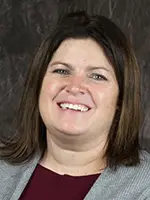
5 summer calf ventilation checkpoints
 By Ann Hoskins
By Ann HoskinsThis extremely abnormal, late and slow spring has messed up the “normal” seasonal projects around the farm. Routine maintenance on your calf facility ventilation may have been put on the back burner. If you haven’t already, now is the time to take care of those tasks. Good air quality goes a long way in promoting calf health. Plus, an efficiently working ventilation system saves dollars on your bottom line.
During the summer, our goal is 40 to 60 air exchanges per hour in calf barns and pens. Here are five checkpoints to make sure that happens:
1. Check all fans to make sure they are running properly. Clean fan blades and the areas around fans. Dust and dirt build up on the blades and the area surrounding the fan. This will affect the fan and its air output. Fans should be on a twice-a-year maintenance schedule.
2. Check your positive pressure tubes to ensure all the holes are free of debris. If you can clean out the tubes, do this twice a year to ensure proper air movement.
3. Check that barn ridges and soffits are free of build-up. These areas will often fill in with dust or become housing areas for birds.
4. If your curtains took a beating this winter, now is the time to fix them. Don’t wait for the fall or winter to return.
5. For those using hutches, it is time to open the back doors and vents. You might also use blocks to lift the backs of hutches. If you have indoor calf pens, make sure all the areas of ventilation are open.
Like all areas of a farm, it is key to make sure the ventilation systems are performing to their best ability. They need a little routine maintenance just like any other piece of equipment.
This article was originally written for the May 2019 edition of Vita Plus Starting Strong. Click here for more calf nutrition and management expertise.
About the author: Ann Hoskins is the Vita Plus calf products coordinator. She grew up on a dairy farm in DeForest, Wisconsin, which she says is instrumental to where she is today. “The lessons and values I gained growing up in this industry have given me the passion to stay involved and continue to learn more every day.” Hoskins earned her bachelor’s degree from the University of Wisconsin-Madison and has spent that last several years at Vita Plus, working with producers to improve performance and help them reach the goals of their calf operations.
| Category: |
Animal health Autofeeders Dairy Performance Facility design |

